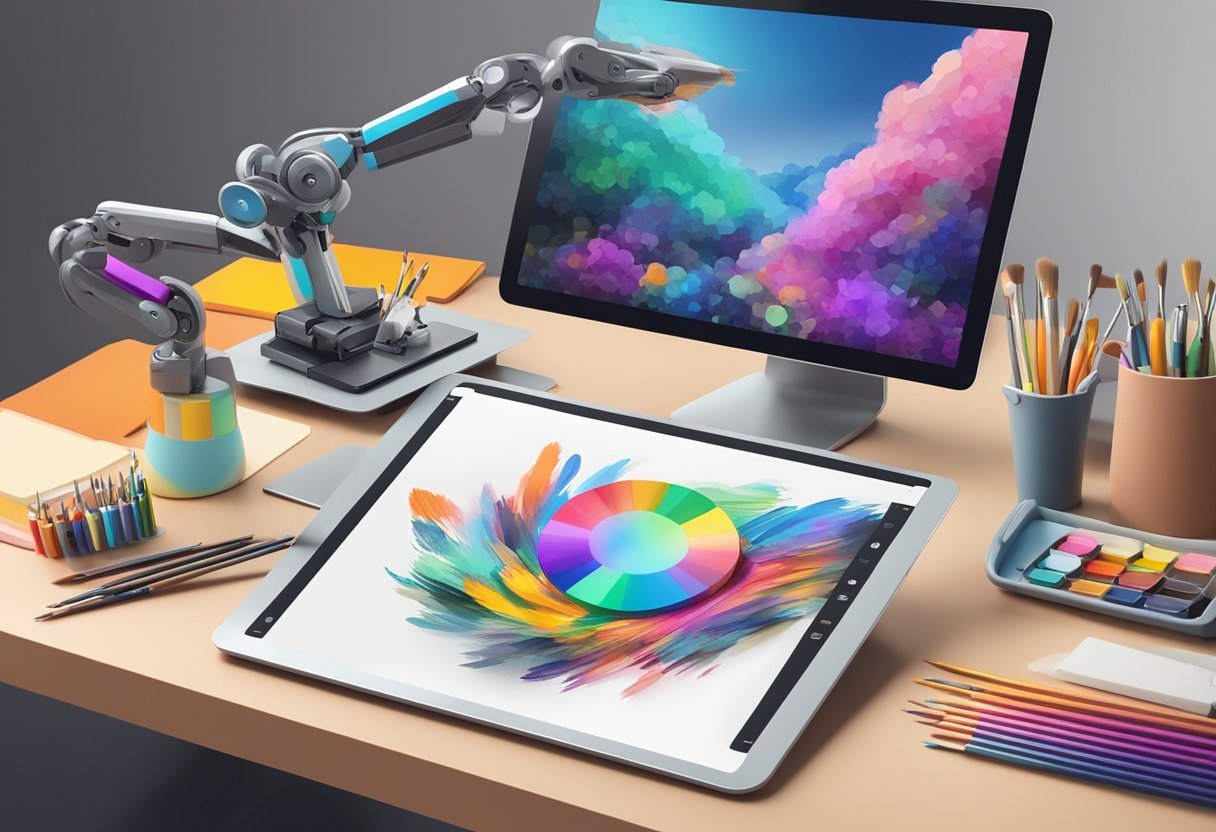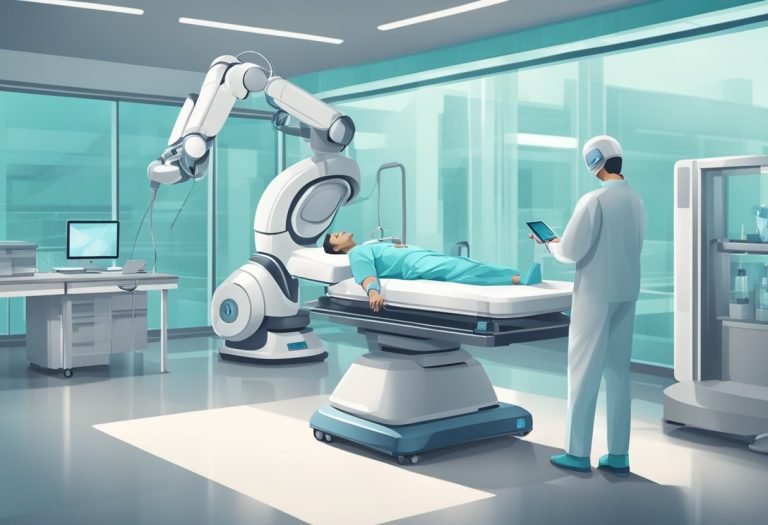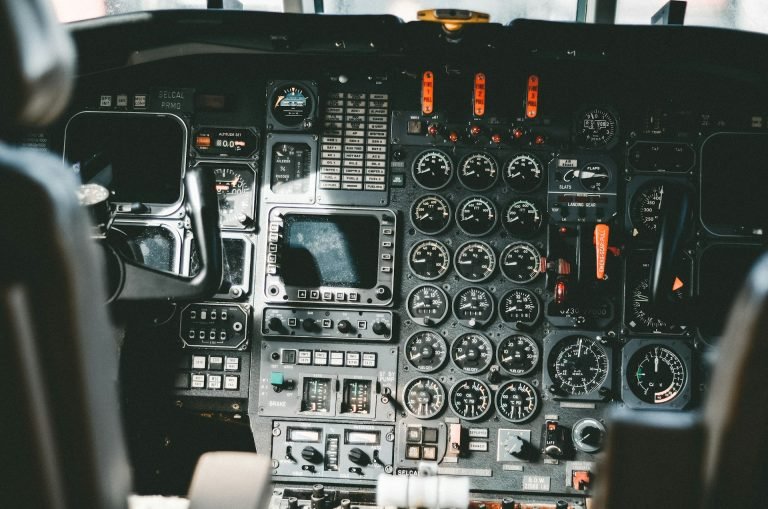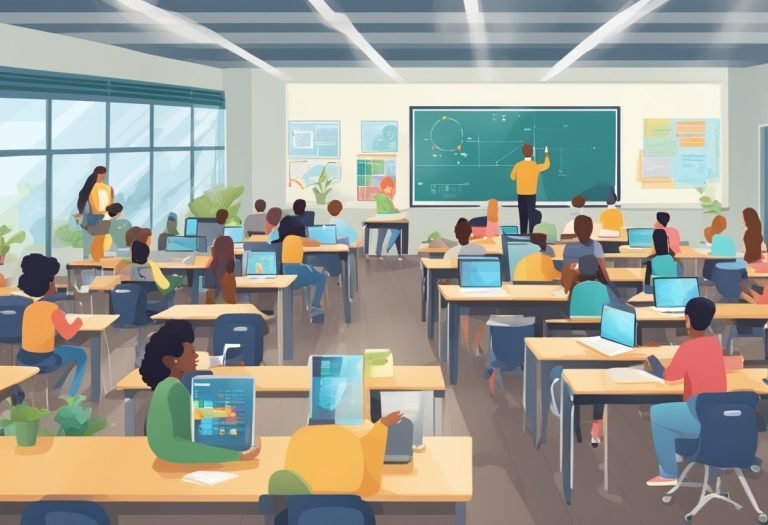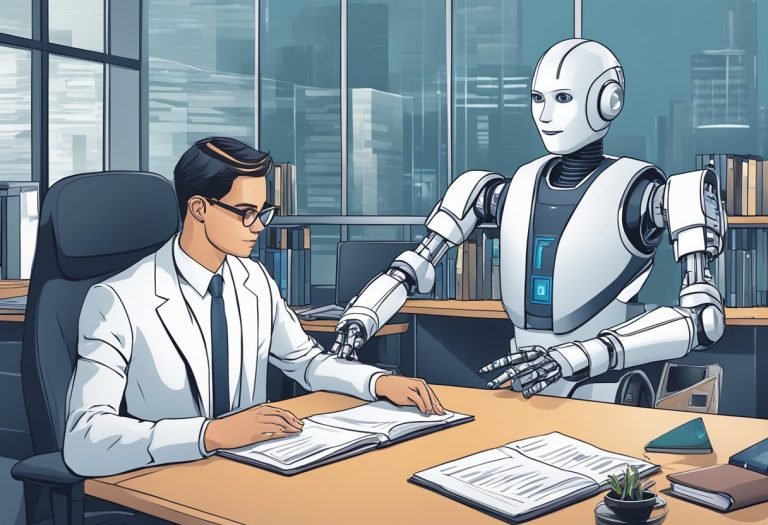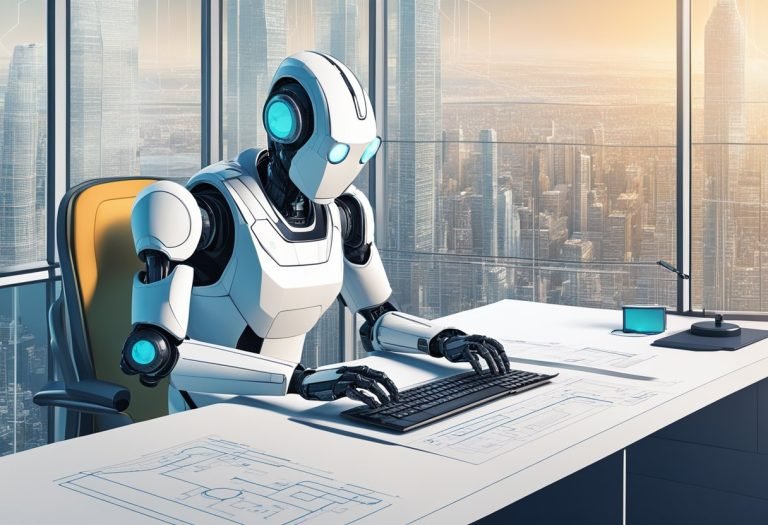Will AI Replace Artists: Understanding the Future of Creativity
The increasing use of AI in art has sparked intense discussions among artists and technologists. While some fear that AI could replace traditional artists, others see it as a tool that opens new doors for creativity. AI will not replace artists, but it will likely change how they work by enhancing their skills and expanding their creative options. The core of art—human emotion and unique perspectives—remains irreplaceable by machines.

Art has always evolved alongside technology, and AI is the latest frontier. By analyzing vast amounts of data, AI can generate art that is innovative and diverse, attracting curiosity and debate. This transformation in the art world is not without its challenges. Economic implications and ethical concerns arise as AI becomes more prevalent, leading to questions about the role and extent of machine-generated art.
As AI technologies advance, they offer artists new tools to experiment and push the boundaries of artistic expression. This ongoing evolution provides opportunities and challenges that require thoughtful consideration from the artist community. Whether viewed as a threat or an enhancement, AI is reshaping the landscape of art, making this an exciting time for creators and art lovers alike.
Key Takeaways
- AI transforms but doesn’t replace the role of artists.
- Economic and ethical issues are significant concerns with AI in art.
- Artists are using AI to explore new creative possibilities.
The Current State of AI in Art

AI is transforming the art world by offering new tools and perspectives. This has sparked discussions about the nature of art and creativity. AI-powered technologies are creating various forms of art, and opinions on this trend vary widely among artists and the public.
AI-Powered Art Creation Tools
AI can produce paintings, music, and even poetry. These tools use algorithms to generate pieces based on input data. Popular tools include DeepArt and DeepDream, which analyze and reinterpret images. Such tools use neural networks inspired by the human brain to create unique artwork.
Collaborations between artists and machines have led to innovative pieces. However, there’s debate about whether these creations should be classified as art or just digital output. Some artists embrace these technologies to expand their creative approaches, emphasizing the machine’s role in broadening artistic boundaries.
Distinguishing AI Art from Human-Created Art
It can be challenging to tell AI-generated art from human-created pieces. AI art often showcases intricate patterns and styles generated by algorithms. People sometimes struggle to recognize if a piece was created by a person or a machine.
Despite these challenges, some features may help differentiate them. For instance, AI art might show a lack of emotional depth or originality that’s more present in human creations. The role of AI in art also raises questions about authorship, ownership, and the value of artistic intent.
Public Perception and Acceptance
Public opinion on AI art varies. Some appreciate the novelty and creativity AI brings to the table. Others worry it could devalue traditional art forms and threaten artists’ livelihoods. Concerns about AI usage, such as ethical issues and job displacement, have been raised.
Studies show that AI can offer benefits, liberating artists to focus on more meaningful projects. As technologies evolve, the art community and the public continue to grapple with AI’s implications on the art world. There’s ongoing debate about how AI will shape the future of art, with many people voicing different opinions and hopes.
Impact on the Artist Community

The rise of AI technology brings significant effects to the artist community, affecting employment, education, and artistic expression. Artists must navigate changes in job opportunities and adapt to new ways of creating art.
Artistic Employment and Opportunities
AI is reshaping job opportunities in the art world. Artists are facing competition from AI-generated artworks, which can be created faster than traditional methods. While some fear job losses, others see AI as a tool for innovation, enabling new types of collaborations and creative processes.
There are now roles focusing on integrating AI with artistic practices, offering fresh opportunities for those who adapt. Artists can use AI to enhance their work, explore different styles, and reach wider audiences.
Changes in Art Education
Art education is evolving to incorporate AI technologies. Students are learning to work with AI tools, which have become an essential part of modern artistic practices. These tools are providing new ways to experiment and learn, beyond traditional methods.
Institutions are updating their curricula to include digital skills and AI. This ensures that students are prepared for future careers that may involve working alongside AI. Educators emphasize creativity and critical thinking, skills still uniquely human and crucial in the AI-augmented art world.
New Genres and Techniques
AI has paved the way for new genres and techniques in art. Generative algorithms can create pieces that were previously impossible, pushing the boundaries of creativity. This shift is expanding the definition of what art can be.
Artists can now experiment with AI to create interactive, dynamic, or personalized experiences. The blending of AI and traditional art forms results in unique hybrids that challenge conventional artistic norms. As AI technology continues to advance, artists will continue to explore these exciting new possibilities.
This exploration of AI in art provides artists with more creative freedom and introduces audiences to diverse and innovative artworks.
Comparative Analysis

Artificial Intelligence (AI) in art introduces a new dimension by blending technology with creativity. While AI offers rapid production and novel techniques, human artists excel in emotion and deep conceptualization, creating unique and personal works.
Creativity Differences
AI’s ability to generate art is impressive but differs from human creativity. AI uses algorithms to create patterns and designs based on existing data. It can quickly generate multiple variations and styles, making it a powerful tool for artists seeking inspiration or specific patterns. However, AI lacks emotional depth and spontaneity, often producing works that may feel generic or lack personal touch.
In contrast, human creativity is driven by emotions, experiences, and cultural influences. Artists draw inspiration from their environment, personal journeys, and the world around them, resulting in unique and meaningful artworks. Human artistry often conveys a story or a message, allowing for a deeper connection with the audience. This aspect of creativity remains challenging for AI to replicate, as machines do not experience emotions or have personal narratives.
Skill and Craftsmanship
AI excels in precision and speed, making it useful for generating detailed designs or repeating specific art styles. Machines can learn techniques rapidly and apply them without error. This efficiency is beneficial in fields like graphic design and animation, where consistent output is crucial.
Human skill, on the other hand, involves intricate craftsmanship and years of practice. Artists develop unique styles through continuous learning and experimentation. The tactile experience of working with materials, the physical act of brush on canvas, or chisel on stone, creates a sensory connection with the artwork. This hands-on craftsmanship brings a warmth and authenticity to human-created artworks, which AI cannot yet replace.
Technical Insights
Artificial intelligence in art involves intricate algorithms and data processing. These processes enable AI to create and replicate art forms. Despite breakthroughs, there are challenges and limitations in machine learning that need consideration.
Algorithm and Data Training
AI art relies heavily on algorithms designed to mimic human creativity. These algorithms are trained on vast datasets of existing art, enabling them to learn and replicate styles. The quality and diversity of the dataset directly impact the AI’s ability to produce innovative art.
Key components include neural networks that analyze patterns within the data. For instance, Generative Adversarial Networks (GANs) are commonly used to create complex and detailed artworks. They consist of two parts: a generator and a discriminator, which work in tandem to improve the art’s authenticity.
Training these algorithms requires significant computational power and access to diverse data sources. Limitations in the datasets can result in art that lacks originality or fails to represent certain artistic styles. Ensuring a comprehensive and ethically sourced dataset is crucial for meaningful outputs.
Machine Learning Limitations
While AI has advanced significantly, it still faces limitations in art creation. Machine learning models can mimic existing styles but struggle to innovate or truly understand the emotional depth of human creativity. This gap is due to the current complexity of emotional expression, which is challenging for machines to replicate.
Models like GANs require substantial human input to refine. AI’s dependence on training data makes it prone to unintentional biases, potentially affecting the neutrality of the produced art. Additionally, generating context-specific pieces remains difficult, as machines lack the personal experiences that influence human creativity.
These limitations mean that AI is more effective as a tool to aid artists rather than as a standalone creator. Understanding these constraints is essential for maximizing AI’s potential in artistic fields.
Economic Considerations
AI technology is reshaping economic landscapes in the art world by affecting market value and production scalability. These changes bring new opportunities and challenges for artists and industries alike.
Market Disruption and Value
AI’s rise in art is altering traditional markets, creating both excitement and concern. Software like DALL-E provides new tools for artists to explore, potentially increasing the value of digital works. The AI-in-Media market is projected to grow significantly, with expected increases from USD 8.21 billion in 2024 to USD 51.08 billion by 2030. This expansion suggests a shift in how art buyers and investors perceive value, blending human and AI-created pieces. While some worry about AI overshadowing human creativity, others see it as a collaboration that could enhance artistic expression and redefine market dynamics.
Production and Scalability
AI can revolutionize production processes, making art creation more efficient. Tools that automate elements of design and production allow for faster turnaround times. This scalability can be particularly beneficial for artists looking to fulfill large projects. Larger audiences can be reached without compromising quality. AI has also allowed more people to engage with art, as barriers to entry are reduced. Artists can benefit from new possibilities while still maintaining their unique style. However, finding a balance between automated processes and human touch is crucial to keep the authenticity and emotion in art, ensuring that machines and humans work together in harmony.
Ethical and Legal Issues
AI in art raises significant ethical and legal concerns. Key issues involve questions about authorship, copyright, authenticity, and originality. These challenges impact not only creators but also consumers and legal systems.
Authorship and Copyright
Authorship in AI-generated art is a complex issue. Traditional copyright laws assign rights to human creators, but AI challenges this norm. When an AI creates a piece, identifying the rightful owner becomes difficult. Is it the programmer, the user, or the AI itself? Legal systems struggle with this question.
Copyright laws in many countries are not equipped to handle AI’s role in creation. Some experts suggest updating them to define who holds the rights in a collaboration between humans and AI. There is also concern over the use of existing artworks to train AI, potentially infringing on original creators’ rights. For those invested in art, including artists and collectors, these questions are of great concern.
Authenticity and Originality
Authenticity and originality are key elements of art that AI complicates. AI-generated works can mimic styles of famous artists, raising questions about what makes an artwork authentic. Consumers may find it hard to tell if a piece is genuinely unique or a digital reproduction.
The blending of machine-made and human-made art also leads to debates over originality. When AI reproduces patterns or styles from vast data sets, it calls into question the uniqueness of the work. Generative AI can rapidly produce large amounts of art, potentially flooding the market and affecting the value and perception of authenticity in art. This situation can impact artists’ livelihoods, as the value of trained originality is challenged by machine precision.
Future Prospects
AI is making significant strides in creative fields, influencing how art is created and distributed. As technology advances, new possibilities and roles are emerging for both AI and human artists.
Advancements in AI Technology
AI technology in the arts is progressing rapidly. Machines can now create complex pieces of art using sophisticated algorithms. This development is enabled by machine learning techniques that allow computers to analyze and mimic artistic styles.
The rise of online platforms has given AI-generated art a place to be showcased and sold, especially with the advent of NFTs. However, this market remains unregulated, raising questions about the valuation and authenticity of digital creations.
Supporting innovation, AI tools are assisting artists in generating new ideas. By handling repetitive tasks, these tools free artists to focus on the conceptual aspects of their work. This collaborative effort can push the boundaries of what is considered art.
Potential Roles for Artists in AI
As AI becomes more integrated into the art world, human artists are finding new roles that emphasize their unique skills. They are not only creators but also curators and interpreters of AI-generated work. Artists can use AI to explore new styles and expand their creative processes, enhancing rather than replacing their role.
In educational settings, artists are taking on roles as mentors, guiding others in using AI as a creative tool. This involves teaching the ethical implications and practical applications of AI in art.
Additionally, human creativity plays a pivotal role in critical decision-making and contextual interpretation, aspects where AI still falls short. Artists’ understanding of cultural nuances and emotional depth ensures they remain indispensable in the evolving landscape of digital art, as pointed out by experts like James Hughes from Folio Art.
Conclusion
AI has made significant strides in the creative industry, but it is unlikely to fully replace human artists. Instead, AI serves as a tool that artists can use to enhance their creative processes. By working together, AI and humans can explore new avenues of creativity and expression.
Artists bring a unique human perspective to their work that AI cannot replicate. The emotional depth and personal experiences that artists convey through their creations are often what makes art resonate with audiences. While AI can assist in generating ideas or refining techniques, it lacks the innate human touch.
List of Key Points:
- AI as a creative tool, not a replacement
- Unique human perspective in art
- Collaboration between AI and artists
In various fields such as music and visual arts, AI helps push boundaries and explore innovative forms. For instance, artists like Taryn Southern have utilized AI to create groundbreaking works, demonstrating the potential of this collaboration.
In considering whether AI will replace artists, it is important to recognize the growing need for artists who can blend their skills with advanced technology. This combination expands the possibilities for artistic expression and opens up new ways for audiences to engage with art.
In summary, AI is not replacing artists but is reshaping the way art is produced and appreciated. The future of art lies in the collaboration between technology and human creativity, unlocking new horizons for both artists and art lovers alike.

